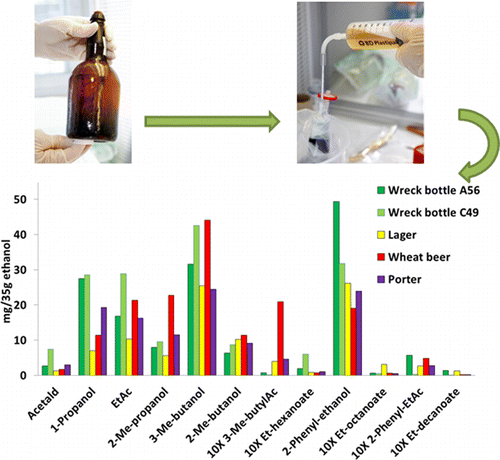Some breweries have taken to resurrecting the flavors of ages past. Adventurous beer makers are extrapolating recipes from clues that archeologists have uncovered from old and even ancient brews found at historical sites. Now scientists have analyzed some of the oldest preserved beer samples from an 1840s' shipwreck to try to provide insight into how they were made. They report their findings in ACS' Journal of Agricultural & Food Chemistry.
Brian Gibson and colleagues explain that in 2010, divers discovered an old schooner at the bottom of the Baltic Sea near Finland. Archeological evidence suggested the ship went down about 170 years ago. It was loaded with goods including bottles of champagne and beer. The beer was diluted with salt water, but it contained enough of the original ingredients for the researchers at VTT Technical Research Centre of Finland Ltd. and the Technical University of Munich to analyze and get an idea of the initial recipe.
When the researchers took a sip, they weren't able to discern the beers' intended flavors. High levels of organic acids, produced by bacteria growing in the bottles for years, gave the samples vinegary, "goaty" and soured milk flavors that overpowered the original fruity, malt or hop profiles. However, analytical testing created a picture of what the beer may once have been composed of. For example, they determined that samples from two bottles were different beers based on their hop content. They also found that yeast-derived flavor compounds were similar to those of modern beers, though with a higher than usual content of rose-like phenylethanol.
More information: Analysis of Beers from an 1840s' Shipwreck, J. Agric. Food Chem., Article ASAP. DOI: 10.1021/jf5052943
Abstract
Two bottles of beer from an about 170-year-old shipwreck (M1 Fö 403.3) near the Åland Islands in the Baltic Sea were analyzed. Hop components and their degradation compounds showed that the bottles contained two different beers, one more strongly hopped than the other. The hops used contained higher levels of β-acids than modern varieties and were added before the worts were boiled, converting α-acids to iso-α-acids and β-acids to hulupones. High levels of organic acids, carbonyl compounds, and glucose indicated extensive bacterial and enzyme activity during aging. However, concentrations of yeast-derived flavor compounds were similar to those of modern beers, except that 3-methylbutyl acetate was unusually low in both beers and 2-phenylethanol and possibly 2-phenylethyl acetate were unusually high in one beer. Concentrations of phenolic compounds were similar to those in modern lagers and ales.
Provided by American Chemical Society























